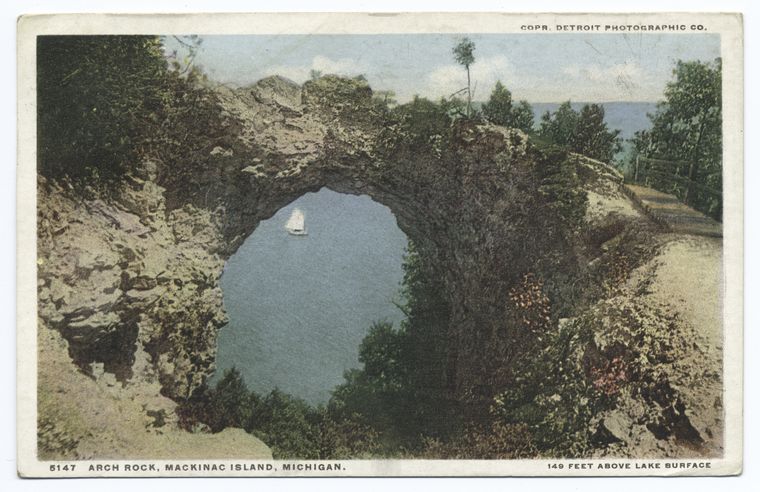While Philadelphia places its
colonial history front-and-center, and New York more-often-than-not embraces a spirit of change, sometimes grinding its historical markers into the
pavement, northern Michigan seems to take an unusually high degree of pride in its long history as a tourist destination.
 |
| Pictured Rocks Cruises Historical Marker |
On my most recent trip up north, I became aware of this acutely when I stepped onto Munising's bay-side dock and encountered a historical marker celebrating the history of "Pictured Rocks Cruises." The act of placing the marker beside the queuing place for contemporary cruises embraced and legitimized my presence as a tourist as a part of the region's economic heritage. In critical analysis, most notably and recently put forward by my colleague, Cathy Stanton, author of
The Lowell Experiment, public historians can be seen as actively facilitating changes in the labor culture of a place from the production of tangible goods to the production of services and ideas. Often, the critical questions that public historians would raise are, at least in the case of Lowell, "sequestered or enclaved so that...insights are not permitted to unsettle the positive image of the city's overall redevelopment project."
But what about a city, or a region, that has relied on tourism for decades, or even centuries? Under those circumstances, what does the fronting of the history of tourism mean for those engaged in tourism today? As a sometimes self-critical tourist, it is easy to feel comforted by these overtures of acceptance. This tourism history becomes the "heritage" of the region, inviting you, the visitor, to become a link in a long chain of (to use another buzz-word) regional sustainability. You are not a scavenger, flooding to a place that has lost its industrial identity and replaced it with voyeurism, you are a fellow-traveler on a long road of appreciation for natural beauty and a spirit of hospitality.
 |
| View of the Grand Hotel Porch on Mackinac Island |
On Mackinac Island, it is easy to feel like a re-enactor simply by crossing the straits. The citizens of Mackinac Island, supported by their burgeoning tourism industry, created their own alternative historical trajectory by banning the automobile on the island in 1896. As a result, horses abound every summer, and a
carriage tour business thrives. A bastion of the Mackinac Island tourist scene is the Grand Hotel which has been in
continuous operation since 1887. The hotel boasts the longest porch in American (and probably the world) and a self-consciously old fashioned sense of hospitality and resort culture that includes evening dress-codes that call upon vacationers to wear coats and ties or dresses after 6:00 pm every evening. Inside the hotel, the walls of the basement level are decked with hundreds of original historical documents, from lease-letters to newspaper articles, old photographs and old menus. These artifacts are posted in no particular order, and are rendered somehow even more inviting as a result. This is a kind of family album collage provided by a hotel with the kind of soul created by years of continued use.
 |
| Arch Rock, Mackinac Island, Mich. (1900-1902); Detroit Public Library Publishing Company Postcard Collection, Courtesy of the New York Public Library |
 |
| Arch Rock, Mackinac Island, Mich. (2012) photo by the author |
For a more orderly portrayal of the history of the Grand Hotel, a visitor need walk only a few blocks to the
Mackinac Island Art Museum where the special exhibition currently on display features artifacts and enlarged images from the same abundant collection on display within the hotel itself. I found myself particularly drawn to the menus and brochures from every era of the hotel's existence. I found myself comparing the 19th century menus favorably with the contemporary menus focused on local Michigan products and fresh produce and, with a "presentist" self righteousness, turning my nose up at the gelatinous dainties offered in the 1960s. The current issue of the
Public Historian offers some great insights into "Food in Public History" both cautioning interpreters to focus on the cultural perceptions of the past and encouraging folks to help others connect with the "food ghosts" of a particular place. I would argue that Mackinac Island offers food ghosts as well as transportation ghosts and image ghosts. Perhaps in this one place there is more continuity than change.




Comments